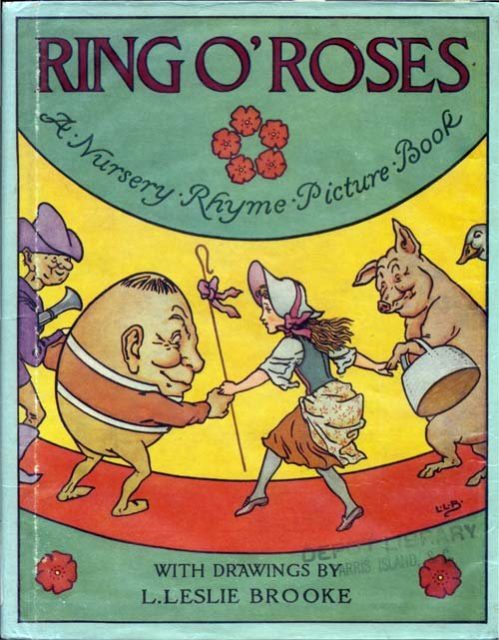Religious persecution, prostitution, medieval taxes, and the plague: these are not the topics that you would anticipate being familiar with as a new parent. Yet right now, mothers of tiny children around the world are senselessly singing along to nursery rhymes that appear innocent. If you dig deeper, some of these songs unveil an appallingly sinister back story.
Animals being cooked alive? Heads chopped off in London? Babies falling from trees? These should not be topics suitable for toddlers, but they are the basis for some of the world’s most famous nursery rhymes.
In the 14th century, the earliest nursery rhymes appeared, although the ‘golden age’ occurred during the 18th century when the classics that we currently hear today emerged and flourished. The first nursery rhyme collection to be published was the Tommy Thumb’s Book in about 1744.
A century after, Edward Rimbault printed a nursery rhyme collection notated for music. A musical version of Three Blind Mice appears in Thomas Ravenscroft’s folk song dating from as early as 1609.
The origins possibly go back farther. No human culture has gone without inventing some form of rhyming songs for its children. The identifiable sing-song meter, rhythm, and tonality has established value and is mirrored within the very creation of nursery rhymes. Music is important to help a child’s mind develop. Seth Lere, the dean of arts and humanities at the University of California at San Diego, has also emphasized the capability of nursery rhymes to foster emotional relationships and cultivate language.
So as modern parents share nursery rhymes with their kids, they are embracing a centuries-old tradition that on the surface appears harmless and beneficial. Yet what about these twisted lyrics, and the dark back stories to them? The meaning to the rhymes is not actually a world of cute animals and sweet princesses, but a conglomeration of the supernatural, traitors, spies, murder, illness, sex, religious violence, and clerical politics. Here are ten of the most popular nursery rhymes with sinister backgrounds.
The things of nightmares
“Baa Baa Black Sheep” is about the medieval wool tax, enforced in the 13th century by the King Edward I. With the new rules, a third of the cost of the sack wool went to him, a third went to the church, and the rest went to the farmer. Black sheep were also considered to be bad luck for the reason that their fleeces, not able to be dyed, were less profitable for the farmer.

“Ring a Ring o’ Roses” originated during the Great Plague of 1665 in London. The “rosie” was the foul rash that formed on the skin of the bubonic plague victim, the stink of which then required concealment with a “pocket full of posies.” The bubonic plague killed 15% of Britain’s population, a fact which is referenced in the song: “atishoo, atishoo, we all fall down.”

“Rock a Bye Baby” alludes to the events introducing the Glorious Revolution. The baby is alleged to be the son of King James II of England but was widely thought to be some other man’s child, smuggled into the birthing room to guarantee a Roman Catholic heir. The rhyme is tied with the connotation; the ‘wind’ might be the Protestant power blowing in from the Netherlands and the ‘cradle’ was the royal House of Stuart. The earlier documented version of the words in print contains the menacing footnote, “This may serve as a warning to the Proud and Ambitious, who climb so high that they generally fall at last.”
“Mary, Mary Quite Contrary” might be about Bloody Mary, the daughter of King Henry VII, and the concerns of murder and torture of the Protestants. Queen Mary was a faithful Catholic, and her garden was a reference to the graveyards which were filled with Protestant martyrs. The ‘cockleshells’ were thought to be devices of torture that were attached to the male genitals, and the ‘silver bells’ were thought to be thumbscrews.

“Goosey Goosey Gander” is another tale of religious persecution but from the other side – it refers to a period of time when Catholic priests would have to say their prohibited Latin prayers in secret, even within the privacy of their homes.
“Ladybird, Ladybird” is also about 16th Century Catholics in Protestant England and the priests who were burned at the stake for their religious beliefs.
“Lucky Locket” is about a famed spat between two fabled 18th-century prostitutes.
“Here We Go Round the Mulberry Bush” developed, according to historian RS Duncan, at Wakefield Prison in England, where female inmates were obligated to exercise about a mulberry tree within the prison yard.
“Oranges and Lemons” tells of a guilty man on the way to his execution – “Here comes a chopper to chop off your head!” – past a number of famed London Churches: Shoreditch, Stepney, Bow, Old Bailey, St Martins, and St Clemens.
“Pop Goes the Weasel” was evidently a ludicrous rhyme that, upon later inspection, unveils itself to be regarding pawnbroking, minimum wage, and poverty that was hitting the Eagle Tavern on London’s City Road.
Not safe for children?
In our own times, the idea of conveying these harsh themes to an infant audience appears odd. It infuriated the Victorians as well, who established the British Society for Nursery Rhyme Reform. According to Random House’s Max Minckler, during the 1940s the Society was denouncing 100 of the most frequently recited nursery rhymes, including Three Blind Mice and Humpty Dumpty, for “harboring unsavory elements.”
